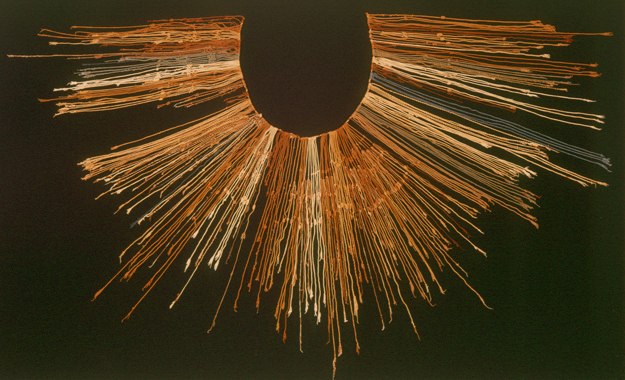What is a book? Unesco (in 2021) described “the book” as an object that is capable of all kinds of transformations and iterations.[i]
From the perspective of those of us who study the history of books, it is hard to come up with a satisfying definition of what a book as an object actually is, because it can take many different forms. Recent numbers of Book History, the annual (and now, due to the growth of the field, biannual) journal of the Society for the History of Authorship, Reading, and Publishing, have included articles discussing many non-codex formats, including papyrus; manuscript; newspapers, magazines, and pamphlets; board and card games; and of course digital texts. And yet it is still most often the iconic codex form, with its bound gatherings of leaves, that readers (and probably UNESCO) think of immediately when we think of “a book.”[ii]
Books That Aren’t Codices
The codex form is not dying any time soon. It has the advantages of being more portable than a clay tablet; of being indexable and easily navigable (any section can be turned to at once, unlike, for example, a scroll); of being more durable and less dependant upon external power sources than a computer; and of having a tidy oblong shape that despite wide variations in size can be stacked into neat piles, tidily shelved, or even made into furniture.[iii]
But in the past, present, and future, there always were, are, and will have been methods of inscription that don’t fit our mental image of “the book” at all. The cuneiform and hieroglyphic writings from ancient Sumer and Egypt, for instance, are well known to anyone who has visited the British Museum. At Kuthodaw Temple in Mandalay, Myanmar, there are 729 caves, each containing a marble slab with a text from the Therevada Buddhist Tripitaka on each side, so that a walk through those caves offers a reader the whole of the Pali Canon.
Although Indigenous peoples are sometimes dismissed in the settler imaginary for their lack of a “literature,” they have on the contrary had many different methods of inscription, which complement their already powerful traditions of oral preservation and telling.[iv] The Wampum Trail research project at the University of Pennsylvania, for example, works to recover the symbolic, cultural, and historical meanings of wampum belts and collars made of woven shell beads, told in the community by Indigenous knowledge-bearers as maintaining records of peace treaties and other important events—knowledge held in the wampum itself which settler museums have often obscured or misunderstood when displaying it.[v]
In Andean South America, cotton or wool strings were knotted and colour-coded into quipu in order to maintain numeric and non-numeric records. Mesoamerican scripts arose independently long before contact and they are preserved on statuettes, monuments, tablets, and cylinder seals.[vi] And one of our even more remote ancestors worked half a million years ago to communicate something to us—we don’t yet know what—by carving a shell that we can read even today.[vii]
But Books Aren’t Books, Either
“The book,” then, has not always been a book. But as Johanna Drucker argues, we might think of a book less as a physical object than as an “event space,” manifesting as a “distributed condition of literacy and/or semiotic communication across physical traces.”[viii]
The “book” itself could be reels of metallic tape, or an alphabet created through artificial pheromones, or metal plates buried and dug up and badly misinterpreted centuries later, or glowing words formed from lichen, or the very screen you’re reading this on.[ix] It could be in the almost-codex accordion format, or take the shape of a wooden puzzle, or be performed and re-performed as “shuffle literature.”[x]
Whatever uniform appearance “the book” might have in the popular imagination, it turns out that in practice it is a shapeshifter, and that one of our joys as readers is to adapt to its conditions anew each time we pick up first one book, then another, and then another.
References
[i] https://www.un.org/en/observances/book-and-copyright-day
[ii] Interestingly, it’s also often fiction that seems implicitly to be thought of during events like UNESCO’s, suggesting that perhaps this question of getting young people to read is genre-bound, caught up in thinking of the reading of fiction as the yardstick of achievement (or, more cynically, as a gateway to “more important” kinds of reading). It may also overlook the fact that the greater part of the global population can be found reading constantly anyhow; even the most aliterate of us can hardly avoid engaging on a daily basis with street signs, menus, food packaging, official government correspondence, and general spam. For discussions of what ordinary people “really” read, have read, and have had read to them, see the work of DeNel Rehberg Sedo, Shelley Trower, Richard Altick, Martin Lyons, and Jonathan Rose, among others.
[iii] Knight, Jeffrey Todd. "‘Furnished’ for Action: Renaissance Books as Furniture." Book History 12 (2009): 37-73.
Baker, Nicholson, “Books as Furniture.” The New Yorker 12 June 1995: 84-92.
[iv] One of the foundational works in our field is D. F. McKenzie’s 1985 study of the relationship between orality and literacy with regard to the signing of the Waitangi Treaty. See “The Sociology of a Text: Oral Culture, Literacy, and Print in Early New Zealand.” In Bibliography and the Sociology of Texts, 77–128. Cambridge: Cambridge University Press, 1999.
[v] https://wampumtrail.wordpress.com/
[vi] See, for example, John S. Justeson, “The Origin of Writing Systems: Preclassic Mesoamerica.” World Archaeology 17.3 (Feb. 1986): 437-458.
[vii] Josephine Joordens et al. “Homo erectus at Trinil on Java used shells for tool production and engraving.” Nature 518 (2015): 228-231. https://www.nature.com/articles/nature13962
[viii] Johanna Drucker, “Distributed and Conditional Documents: Conceptualizing Bibliographical Alterities.” MATLIT 2.1(2014): 11-29. https://digitalis-dsp.uc.pt/bitstream/10316.2/34680/1/MT2-1_artigo1.pdf
[ix] In, respectively, Homer Eon Flint, The Lord of Death (1919); Kathleen Goonan, The Nanotech Quartet (1994-2002); Will Self, The Book of Dave (2006); and Jeff Vandermeer, The Southern Reach trilogy (2014).
[x] “Spec.” “From the Stacks: Flatland: A Romance of Many Dimensions by Edwin Abbott Abbott, the Arion Press edition.” (9 March 2012). https://spec.lib.miamioh.edu/home/from-the-stacks-flatland-a-romance-of-many-dimensions-by-edwin-abbott-abbott-the-arion-press-edition/
Hohenadel, Kristin. “To Read this Book, You Have to Solve a Mechanical Puzzle on Each Page.” Slate (18 August 2016), https://slate.com/human-interest/2016/08/codex-silenda-is-a-wooden-book-whose-story-you-unlock-by-solving-five-mechanical-puzzles.html
Husárová, Zuzana and Nick Montfort. “Shuffle Literature and the Hand of Fate.” Electronic Book Review (5 August, 2012). https://electronicbookreview.com/essay/shuffle-literature-and-the-hand-of-fate/


